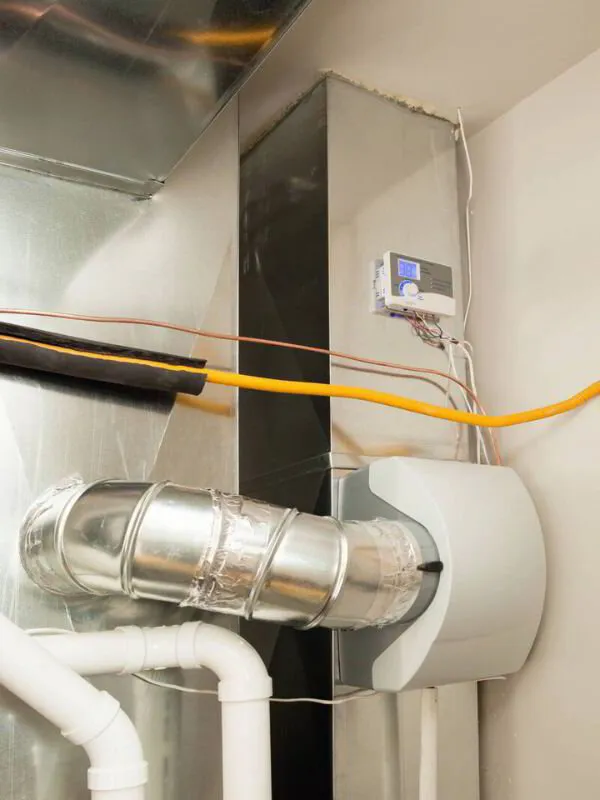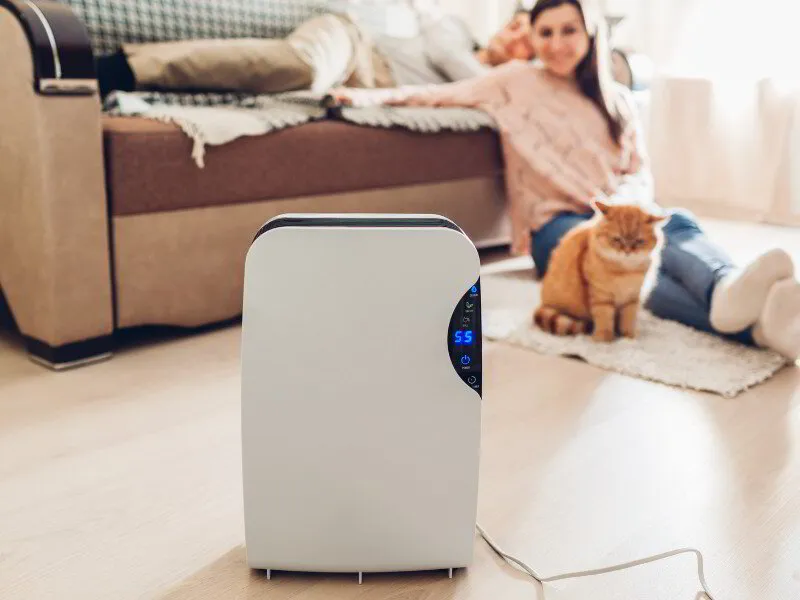High humidity levels in your home can cause a whole host of problems, from minor concerns like damage to furniture and fabrics to more serious problems like mold and mildew growth.
While your air conditioner can reduce humidity levels slightly, undoubtedly, the best solution for controlling excessive humidity in your home is to use a dehumidifier.
But when should you turn it on?
In this article, we'll take an in-depth look at how and when to use a dehumidifier, as well as how to choose one that's right for your home and your climate.
So if you're looking for ways to reduce moisture levels in your house all year round, read on!
Condensation On Windows
When condensation appears on your windows, it is a sure sign that you need to invest in a dehumidifier.
High humidity levels create an environment that allows moisture to form on interior surfaces such as glass windows and mirrors.
This droplet formation is known as condensation, and it can cause damage to the window frames, leading to costly repairs.
The presence of condensation on windows is a reliable signal that the relative humidity (RH) in your home is above 55% and that it is time to bring in a dehumidifier to keep the air dry and the room comfortable.
Dehumidifiers work by drawing moist air into the unit, where it passes over a cold coil or plate.
This causes the moisture molecules inside the air to precipitate out of suspension, leaving behind dryer air which is then pushed back into your living spaces.
By regulating and lowering the amount of humid air in your home through continuous operation, these units are capable of reducing condensation build-up while also controlling odors and allergens from the air for improved indoor air quality.
Mold Growth
Mold growth is often indicative of there being too much moisture in the air and should get you considering investing in a dehumidifier.
Mold spores are always present in the air, but when the relative humidity level surpasses 55%, these fungi colonies are able to proliferate and spread much more quickly.
In addition to promoting allergies and asthma symptoms, molds can also cause costly damage to your home due to their ability to consume organic materials such as wood and paper.
Utilizing a dehumidifier can help reduce the amount of excess moisture in the air and thus discourage the growth of mold colonies.
Furthermore, since mold spores thrive on excess humidity, using a dehumidifier can also help eliminate existing mold colonies by depriving them of their primary source of sustenance.
Musty Odors
Musty odors are another strong sign that a dehumidifier should be used in the home.
The characteristic smell is caused by the presence of excess moisture in the air, as it provides an ideal environment for mold spores and other allergens to thrive.
As these pollutants reproduce, they create a distinctive smell that can linger in the air even after the source has been removed.
By running a dehumidifier, homeowners can reduce the humidity levels in their homes, which will help remove musty odors and discourage further growth of contaminants.
Low Indoor Air Quality
Problems with too much humidity can lead to poor indoor air quality in your home.
High levels of humidity create an environment where pollutants such as dust mites, pet dander, pollen, and other allergens can easily thrive and reproduce.
This accumulation of contaminants in the air can lead to poor air quality, which can lead to health issues.
A dehumidifier helps reduce the amount of moisture in the air, creating an environment that is less conducive for allergen reproduction.
By controlling relative humidity levels through continuous operation, these units are able to reduce indoor pollutants and keep your air healthy.
You can measure air quality with something called a hygrometer or humidity meter, which tells you how much moisture is in the air.
If the humidity levels are too high, a dehumidifier will help reduce the amount of moisture and make your home's air better for breathing.
Allergy Symptoms
If you are sneezing and coughing a lot, it could be a sign that you need to get a dehumidifier.
Allergy symptoms like runny noses, watery eyes, and difficulty breathing can mean that the air in your home is too humid.
This may be due to the build-up of contaminants in the air or just your body struggling with the humidity in the air.
A dehumidifier can help remove moisture in the air and make it easier for people with allergies to breathe better. It also helps stop mold from growing, which can make allergies worse.
How Long Should You Use a Dehumidifier For?
The amount of time a dehumidifier should be used depends on the humidity levels in your home and how often you use the device.
Generally, it is recommended to use a dehumidifier all day, every day, until humidity levels are reduced to a comfortable range - between 30-50% relative humidity, according to the US Environmental Protection Agency.
This will ensure that any existing mold colonies and other allergens are eliminated and prevented from returning.
Furthermore, running the dehumidifier continuously will help maintain lower indoor air quality as they work in part as air purifiers.
Ideally, once the desired level of humidity has been reached, you can reduce the operation of the unit to just 4-8 hours per day as needed.
The Size Of Your Home
When it comes to choosing the right dehumidifier for your home, size matters.
Depending on the size of your home, you may need a larger or more powerful dehumidifier to reduce humidity levels effectively.
For example, if your home is less than 1,000 square feet in total area, then a small-capacity unit should do the job.
However, if your home is over 2,000 square feet in total area, then you will need a mid-to-high capacity dehumidifier to help keep moisture levels under control.
Your Climate
The climate of your home significantly impacts the size and power of the dehumidifier you should get in order to reduce humidity levels effectively.
If you live in a coastal or tropical climate with higher humidity levels and lots of warm air, then it is best to go with a mid-to-high capacity dehumidifier that can effectively reduce moisture levels.
On the other hand, if your home is located in an area that experiences cooler temperatures with lower relative humidity, then a smaller capacity dehumidifier could be sufficient and save you money with its energy efficiency.
Final Thoughts
A dehumidifier can be an invaluable tool when it comes to protecting your home against costly damage caused by mold growth and poor air quality.
It is also important to choose the right size and power of unit for your needs based on factors such as climate and the size of your home.
If you are unsure which dehumidifier will best suit your needs or would like help installing one in your home, our team at Air and Energy of NWFL is here to assist!
With years of experience helping homeowners select and install efficient units that provide optimal indoor comfort while also conserving energy costs, we guarantee satisfaction with every job we do.
If you live in Pensacola, Florida, and want to get to work removing moisture in your home, contact us today!
This article was written by:
Co-founder and Home Comfort Specialist






